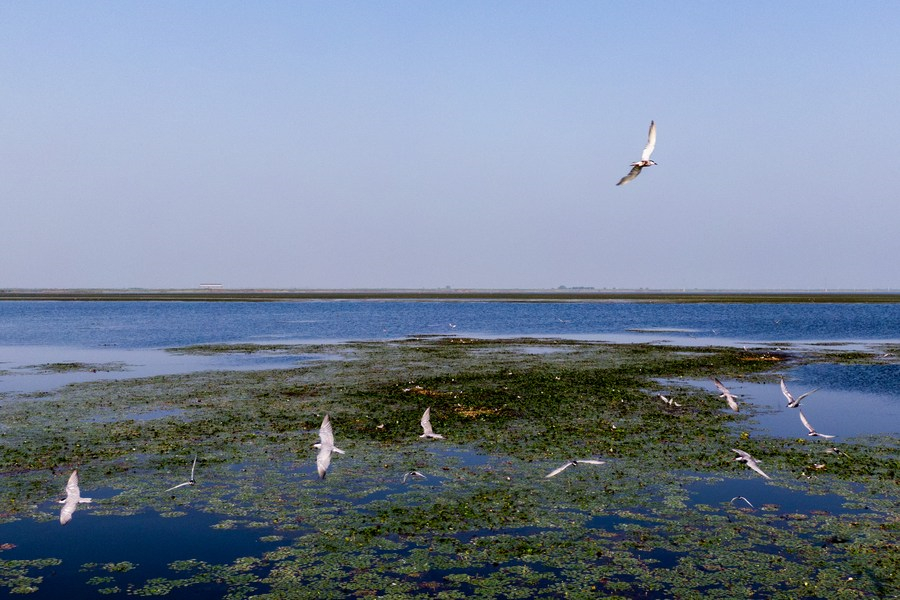On the move

Migratory birds are seen in Chenhu Lake Wetland Nature Reserve in Wuhan, capital of Central China's Hubei province, Aug 4, 2022. [Photo/Xinhua]
Taking action
In the recently released National Action Plan for the Protection of Bird Migration Channels (2021-35), 1,140 sites in China were identified as important breeding grounds, wintering grounds and migratory stops, including Poyang and the Yellow River wetland in the Ningxia Hui autonomous region.
China has 804 species of migratory birds, accounting for 55.6 percent of all bird species, according to the National Forestry and Grassland Administration.
The plan said that relevant departments should monitor and assess migratory bird populations and compensate farmers for damages caused by the birds.
Since China joined the Ramsar Convention on Wetlands, an intergovernmental treaty signed in Ramsar, Iran, in 1992, it has designated 202,600 hectares of wetland as Wetlands of International Importance, according to the administration.
Referred to as the "kidneys of the Earth" and as "species gene pools", wetlands conserve and clean water, maintain biodiversity, help contain floods and prevent droughts.
Wetlands include coastal areas with a water depth of no more than 6 meters at low tide, but exclude paddy fields and expanses of water used for aquaculture and artificial breeding, the administration said.
According to a plan released by the central government in October, by 2025, China will have protected 55 percent of its wetlands.
After the Wetlands Protection Law — the nation's first law to focus on protecting wetlands — was introduced on June 1, 2022, comprehensive protection was strengthened, according to the National Forestry and Grassland Administration.
The law clarified the division of management and introduced harsh punishment for people who damage wetland areas. It restricts construction at important national wetlands and bans harmful activities, including land reclamation, overgrazing, overharvesting and the discharging of wastewater.
























